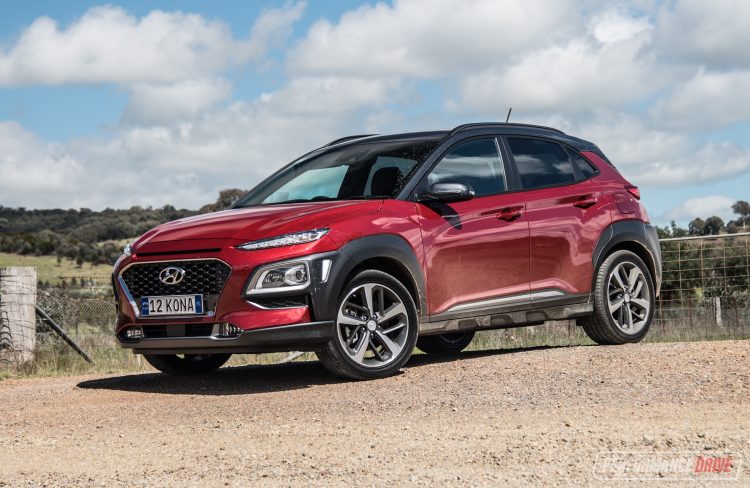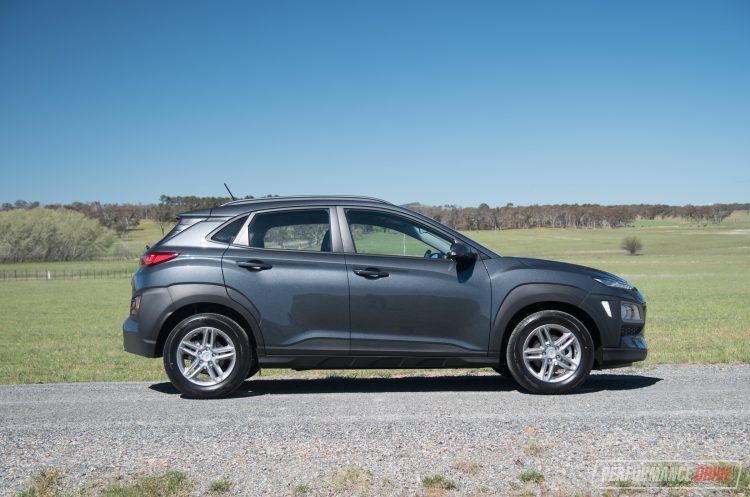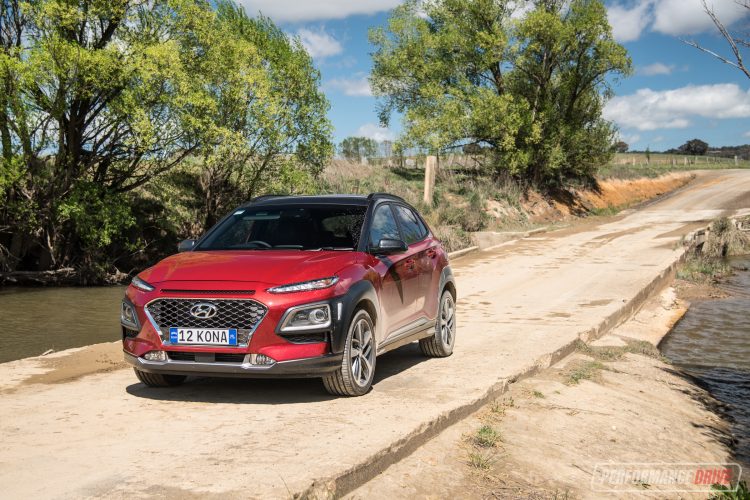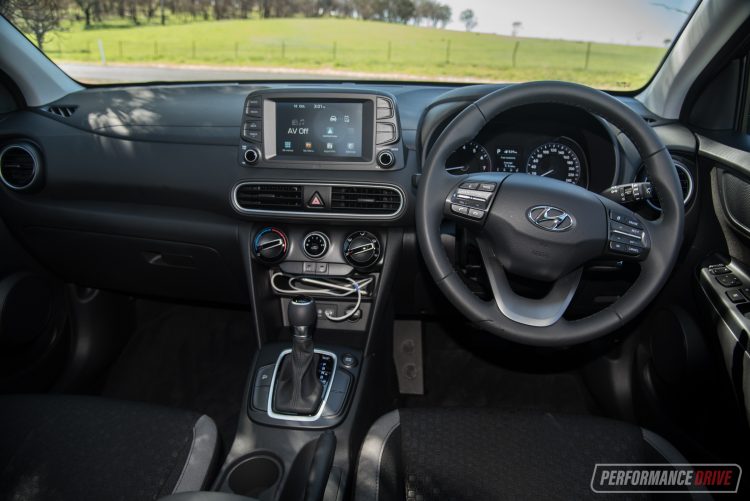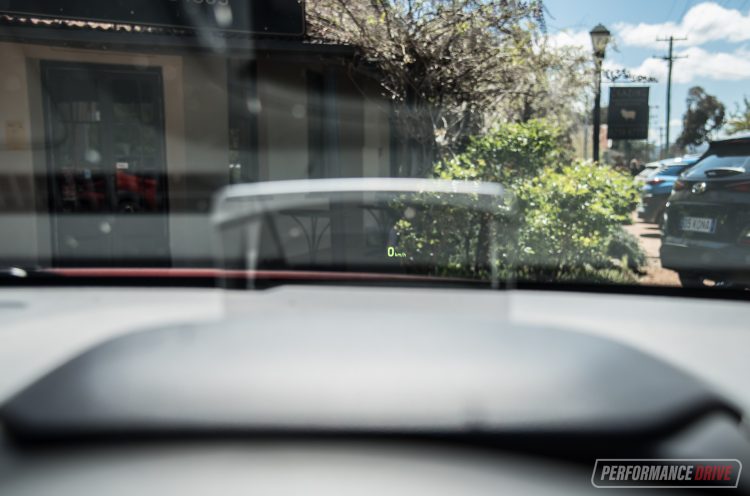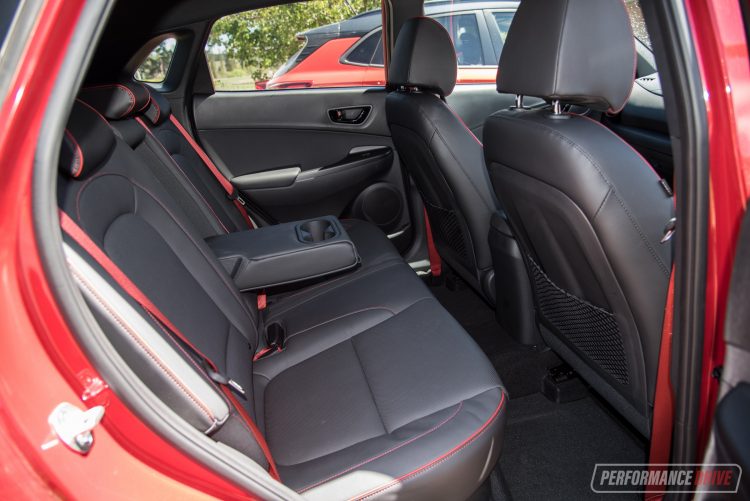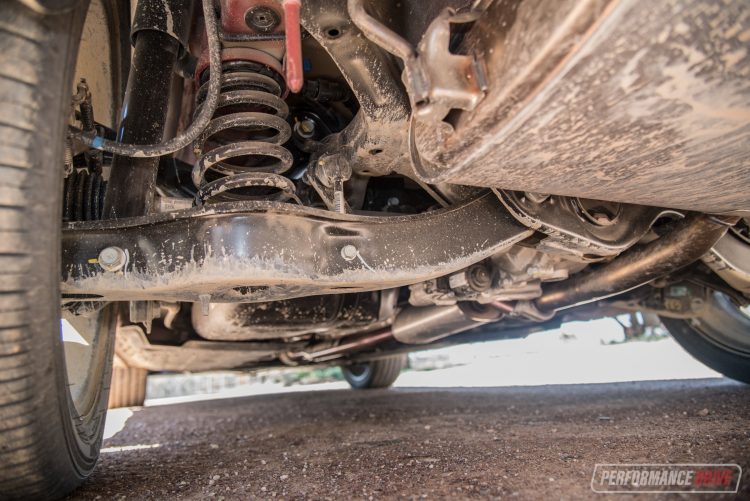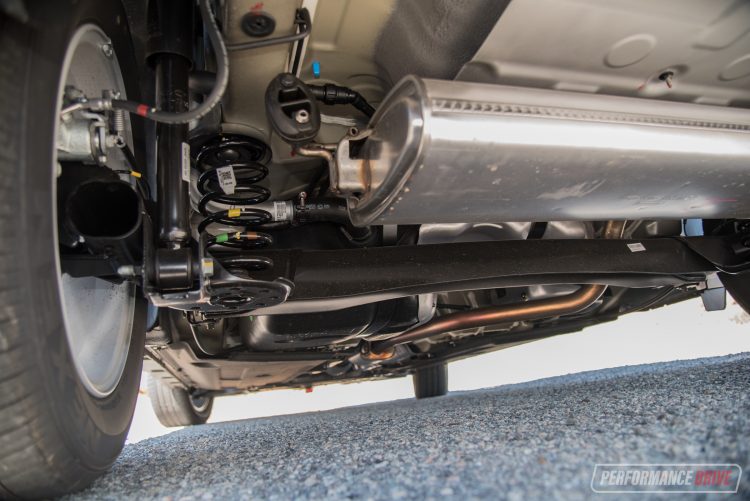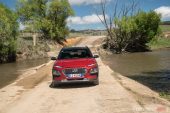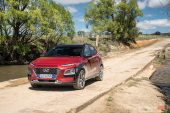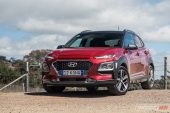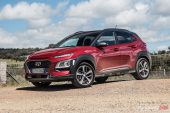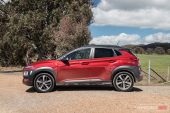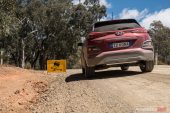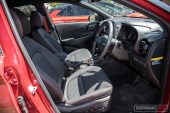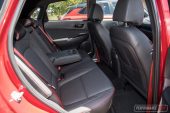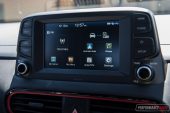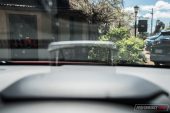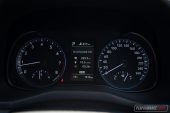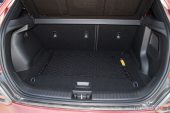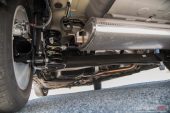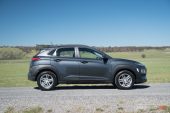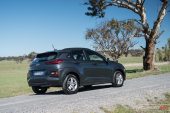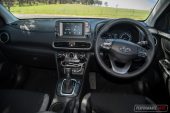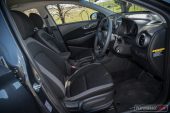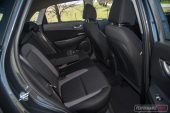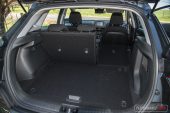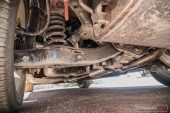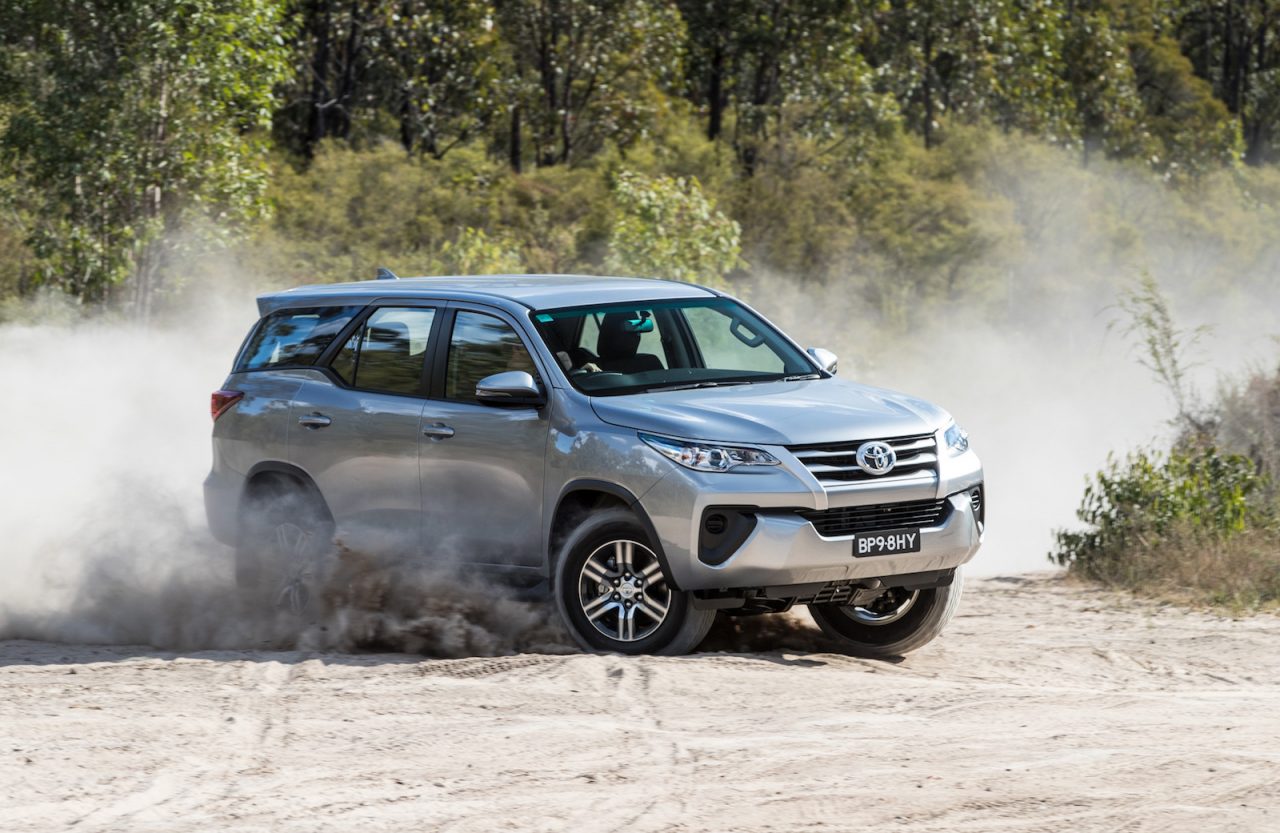Hyundai is bouncing back into the small SUV scene with the new Kona, named after a Hawaiian coastline. And boy does it make an entrance. The design has been three years in the making. On first impressions, we think the designers have hit the bullseye.
You may remember the ix35 from a couple of years ago. Basically, that was replaced with the Tucson. Except, the Tucson is a little larger so it’s moved up into the Mazda CX-5 class. This left an obvious chasm in Hyundai’s showroom. A chasm that shouldn’t be there since the small non-premium SUV market segment is statistically the fast-growing of them all.
Sales have shown steady yet unmissable increases over the past 4-5 years. Toyota only recently jumped on board with its C-HR, while the Mitsubishi ASX has always been the veteran and, to some people’s surprise, the best-seller. Mazda dove in with its segment-benchmarking CX-3 ( now the second best-seller in the class), in 2015. This brings us to the Kona.
Hyundai Australia says it might have missed the initial boat with this class but says waiting has had its benefits. It’s been able to watch what the others are doing and cross-reference what elements are good and what are not. As such, the local lineup is spread between the $24,500 Active to the top $36,000 AWD turbo Highlander. An Elite variant grade slips into the middle, priced from $28,500 (all excluding on-roads).
At these prices Hyundai will probably be carrying around the best-seller crown in the near future. It won’t happen this year as Aussie allocation is somewhat limited. But come this time next year the Kona will be the envy of most rivals mentioned above. Believe it when you see it?
Just take a look at the Tucson. So far this year it is just 206 sales away from the segment-leading Mazda CX-5. Everybody wants a CX-5. For any vehicle to get close to it, it must be good. Well, we think the Kona is an even better proposition in terms of fitting it and meeting this specific segment’s demands.
To start with, it looks hot. It really does. As we listened to one of the designers bang on about various elements of the design, it pretty quickly dawned on us that, actually, it all makes sense. Take the bulging wheel arch flairs, for example. These are called the Kona’s armour and they make the car appear more muscular and wider and sturdier on the road. Then you have the sly LED headlight lines at the front. These aren’t the headlights – they’re mounted below. By using this line of LEDs for the daytime running lights it makes the Kona look super modern and concept-like, and more up-market than the prices would suggest.
In our opinion the Mazda CX-3 has been the nicest and most elegant design in the class. Not anymore. With short front and rear overhangs compared with the rivals, the Kona’s spread-out wheel footprint gives the impression that it’s a larger vehicle. It’s actually 110mm shorter than the CX-3, front to rear, although it is 35mm wider. Again, this assists with the presence of the Kona, making it look purposeful and at a ready-to-jump stance.
When you next see a Kona take a closer look at some of the design and attention to detail. Pay close attention to the sophisticated panel pinch that rises up from the front wheel and drags down to the rear, with the same rising line repeated around the front wheel arch, and then again around the top of the ‘cascading’ front grille, and again above the unique indicator clusters at the rear.
Enough of the design though. How does it compare in terms of standard features? All models come with a 7.0-inch touch-screen media interface with Android Auto and Apple CarPlay, with a rear-view camera and six-speaker stereo. Sat-nav isn’t included on any variant as Hyundai says, based on consumer research, most users prefer to pair their phone and use Google Maps or whatever sat-nav is on their phone. With Android Auto and CarPlay, you can basically mirror these apps up onto the screen, very easily.
During vehicle launches carmakers usually mount aftermarket sat-nav systems to the windscreen in all of the press vehicles and then program them all. For this event Hyundai simply used Android phones and paired up Google Maps. And to tell you the truth, this was by far the least complicated test route we’ve ever had to follow. As you probably know, having Google Maps running means you’re getting live and continuous traffic updates, too. The decision to go without sat-nav is justified, it seems – Hyundai said that if the market demand changes, it can easily roll out in-built sat-nav down the track.
Stepping up into the Elite and Highlander adds some more advanced stuff, including the introduction of Hyundai’s new SmartSense suite. It brings in forward collision warning with pedestrian avoidance (between 8-64km/h), blind-spot warning with lane keep assist, and rear cross-traffic alert during reversing. There’s also driver attention alert to notify you if you have been driving for a long period, and tyre pressure monitoring, with the Highlander adding, among other things, head-up display (which can be retracted/turned off, unlike the CX-3 which only turns off). Overall, the Kona is a very well packaged vehicle in this market segment, exceeding or at least meeting the class benchmarks for features.
While the exterior is a very adventurous and energetic design, the interior tries hard to keep up. It does a decent job we think, considering this price point. Hyundai offers red and acid green accents around the cabin for the Elite and Highlander, which do spice up the atmosphere, but it is quite mono-tone otherwise. We noticed the upper variants are fitted with unique dash trimming, made from a sound-absorbing rubber-like material, while the Active is all hard plastic albeit textured in the exact same way. At this event the designer talked about the way all surfaces are soft with no sheered-off areas, making the cabin pleasant and approachable. And it certainly appeals in that regard. All buttons and controls are presented in very logical positions, making it easy to build rapport with the Kona only after a short time behind the wheel.
In terms of space, we’d say the Kona is one of the largest in the class, with an open and airy front seat area presenting comfy and supportive seats, good storage, along with two 12V sockets and an aux-in and USB port in the front. For the rear passengers the bench is mounted on a step to allow legs to fall down, in effect boosting legroom. Headroom is more than respectable for the class, especially compared with the CX-3 and its swooping roofline. Unlike the Toyota C-HR, the Kona’s rear seat area doesn’t generate feelings of claustrophobia, thanks to low window sills, unobtrusive pillars and nice big windows. Boot space is near the top of the class as well, measured at 361L/1143L. A full-size spare wouldn’t fit under the boot floor, Hyundai says, so instead it gets the spare-saver treatment.
It’s amazing that Kona can be so practical on the inside while showcasing such a funky and futuristic exterior. For design and material quality though we’d say the interior just falls short of the CX-3, although offering lots more space.
Buyers can option for two engines with the Kona in Australia; a 2.0-litre petrol producing 110kW and 180Nm – one of the more powerful in the class as it is – and the 1.6-litre turbo as seen in other Hyundai models, producing 130kW and 265Nm. This latter option is almost the most powerful in the class, unless you remember the ageing Nissan Juke and its 140kW output.
There’s no manual option as Hyundai says there just isn’t a demand for it, so instead the 2.0L comes with a six-speed auto (not CVT, like most rivals) with front-wheel drive. A seven-speed dual-clutch auto is given to the 1.6T, along with all-wheel drive. Strangely, there are no paddle shifters for any variant. We guess this isn’t going to be important for this buyer segment but we (being revheads) think it would be pretty cool to chuck the Kona around with some paddles behind the wheel, considering the excellent power on offer.
Speaking of performance driving, we managed to get in some acceleration timing for both powertrain options using our Racelogic Vbox Sport data logger. Obviously this isn’t going to be an area at the top of priorities for most buyers, but we just had to test it – we were very eager to see what the 1.6T could do. Across a vacant bit of flat, deserted road (which is very easy to find in ACT) we clocked the 2.0L in 9.66 seconds. This is pretty quick compared with the Toyota C-HR auto (12.26 seconds), but just short of the FWD 110kW Mitsubishi ASX XLS (9.62) and 109kW AWD Mazda CX-3 (9.20).
If it’s acceleration you want though the 1.6 turbo is the pick, and it’s available on all variant levels which is kinda cool of Hyundai to offer. We clocked the sprint in a best of 7.57 seconds, which blows most of the competition out of the water – except for that pesky Nissan Juke (7.10).
Out in the twisty countryside of Canberra, with the rolling hills, arid rocky underground peeling back the half-dead grass, and more kangaroo carcasses than you can literally poke a stick at, the Kona is like a refreshing glass of freshly-squeezed forest fruits over some ice with a splash of Grey Goose, in contrast. It has the ability to liven up the drive, and even more so if you encounter some dirt road.
We had fun wrenching the wheel in bends on the dirt, with readily-available weight shift kicking the tail out for some light drifting. This is with the stability control turned off (although it doesn’t switch completely off). If you leave it on, as most buyers will do, the Kona is surprisingly stable and confident, even in slippery dirt conditions.
Getting the power down is no drama at all in the AWD model. There is a 4×4 locking function but honestly, it doesn’t need it. We ran some 0-100km/h sprints on the dirt with the Vbox and it clocked it in 7.6-7.7 seconds, numerous times. It’s like it is a constant all-wheel drive system but it’s not, so you get the fuel savings on the highway. Going for the AWD powertrain also gets you a more sophisticated independent rear suspension setup compared with the old-school torsion-beam in the FWD model.
With the independent rear the Kona is able to brace itself better when leaning into corners, and bumps do not upset the rear end tracking or stability. Hyundai’s local engineers tried out multiple suspension setups for the Australian-spec model to make sure it suited our conditions. And it all does. The ride is supple and absorbent, with good compression range for light to medium bumps. Hit anything bigger and it can crash and bang a little, however, we only experienced this with the Highlander which comes with 18-inch alloy wheels and low profile tyres – compared with the 17- and 16-inch items with taller tyres on the entry two.
About the only minor letdown in terms of sheer driving pleasure is the engine note of the 1.6T. We get it. It’s just a small, run-of-the-mill SUV suitable for everyone from teenagers who have just burst from the womb, to the elderly who are just about ready for a tomb. But in our eyes, it’s not just a run-of-the-mill small SUV. Did you miss the spiel about the design? And the bit about the punchy turbo engine? Some how the Germans manage to make even their most sedate and boring hatchbacks emit a nice little note. The 1.6T here sounds almost identical to the 2.0L non-turbo engine; flat, whiny and a little harsh. We know it’s not much but a pinch of animation would be nice.
It might be late to the party but Hyundai has used the time to make sure it is dressed for the ocassion, wity, and savvy enough to mingle with the best of them. If you’re in the market for small SUV or even a small hatch, this is one we highly recommend.
